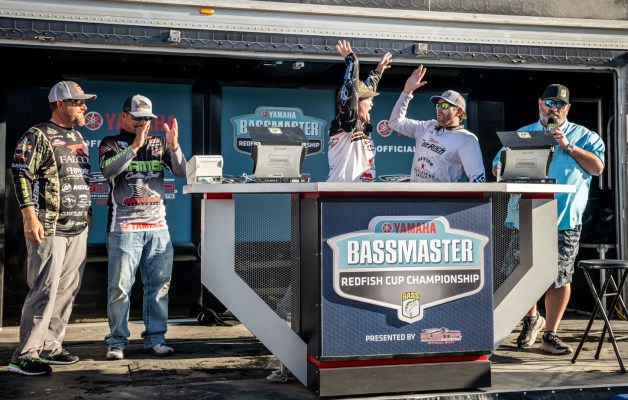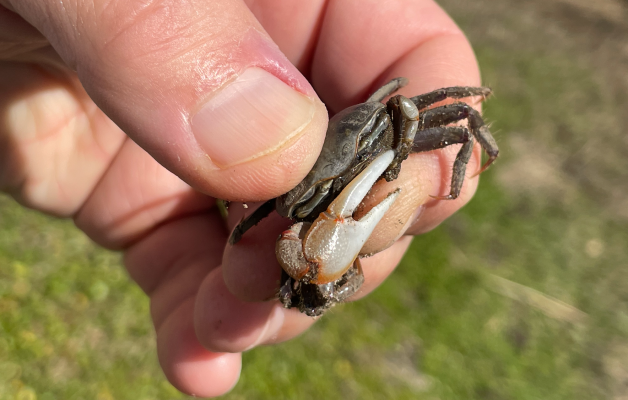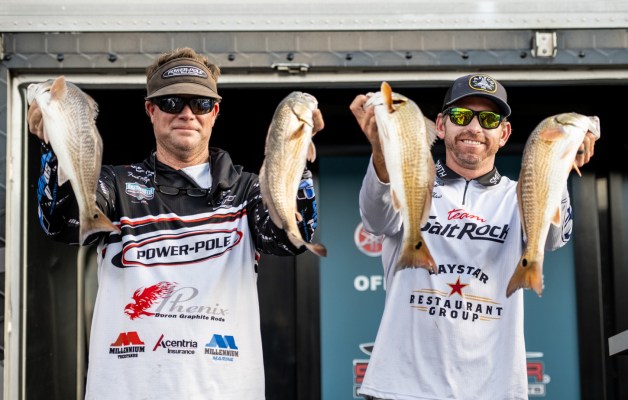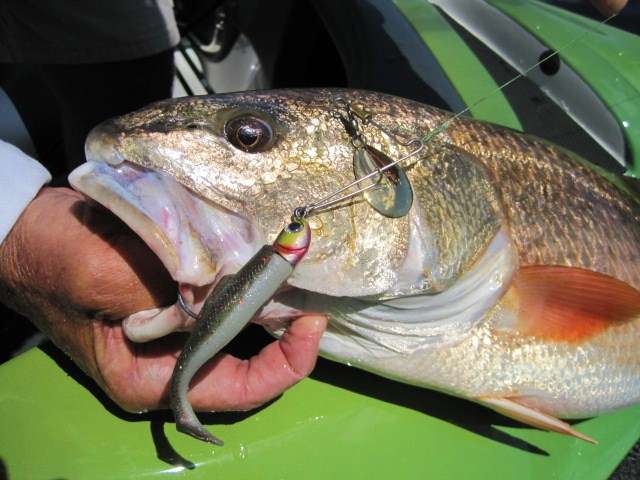
It’s no coincidence that bass tournaments held on tidal waters commonly produce reports of anglers setting the hook on what they think is the kicker of kickers, only to find it’s actually a redfish. Fact is, while these copper-scaled brutes definitely have their own ways, plenty of crossover ensure frequent encounters.
That’s a point worth noting, as jumping out of largemouth bass mode and into redfish mode actually isn’t much more than a side hop.
To that point, several competitors in the Yamaha Bassmaster Redfish Cup Championship presented by Skeeter boast freshwater and saltwater expertise, while others have focused on one or the other. There’s a good chance that by the event’s conclusion, the appeal of coastal saltwater fishing will have captured the interest of bass-centric anglers — in the tournament field and those tuning in to the FOX Sports1 coverage.
The right neighborhoods
Bass anglers encounter redfish more often than the inverse, because reds can live in saltwater, brackish zones and purely freshwater; whereas bass cringe if they sneak into transitional waters. In pure saltwater, bass won’t last long.
Bassmaster Elite pro Bernie Schultz, who makes his home in Gainesville, Fla., has also fished saltwater for most of his life. In his experience, a redfish is the closest marine equivalent to a largemouth bass.
“Both can be cover-oriented, but sometimes they’re free roaming in schools, based on baitfish movement or traveling from one destination to another,” Schultz said. “Most times both are are related to a structural feature. For bass, it could be river shoals; for redfish, it could be oyster bars or hard bottom areas. Sometimes, they’re on sand bottom, but they get in grass like bass do.”
As Schultz points out, tidal rivers like the St. Johns, the Mississippi Delta and the Sabine often find bass and reds literally side-by-side in the same habitat. Here, redfish are more likely to come and go, while bass often stake out a general area for seasonal use.
“Current positions redfish, just like bass respond to current by getting behind something or hugging the bottom to find a current break, either for relief or an ambush point,” Schultz said. “While bass may use a laydown, a rock outcropping or a boulders, redfish will use corals (limestone outcroppings) and oyster bars.”
In residential canals, ports and marinas, docks and piers offer another scenario where redfish behavior parallels a common bass behavior. Shade, Schultz said, is the key attraction, but moving tides typically find the reds feeding high in the water column, while they hug the bottom to nap away the slack periods.
“Any submerged cover, like a crab trap or a sunken grocery cart will attract redfish — same as a brush pile for bass,” Schultz said. “Redfish also like bridges, and they’ll flip flop from one side to the other as the (tide direction) changes.
“Both redfish and bass will use shadow lines from docks and bridges, as well as trees — mangroves for redfish; overhanging willows for bass. They’re both predators, so they’ll use cover to their advantage.”
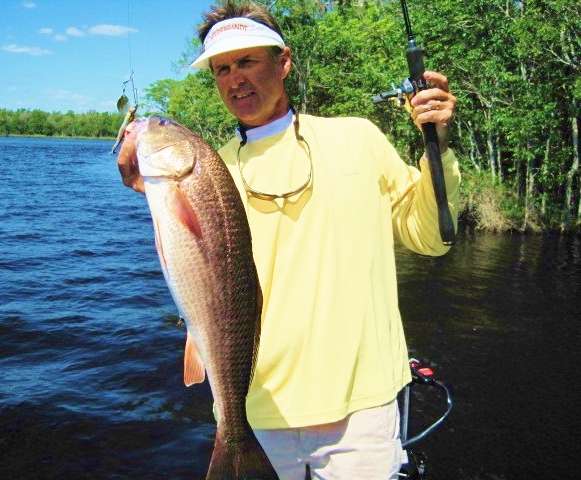
Boat notes
Bass tournament bycatch proves that both species are accessible by the task-specific boat style. Conversely, the skiffs and bay boats from which saltwater anglers target redfish also work fine in freshwater scenarios.
Because slot-sized redfish stick to the inshore/coastal waters, you won’t need an offshore vessel, however, when they push onto a whisper-thin flat or slither through a grass bed with barely enough water to cover their backs, those ultra-shallow micro skiffs or fishing kayaks take center stage.
A distinctive characteristic of inshore saltwater boats is the wide gunnels. This allows 360-degree walk-around freedom — a handy detail when a hooked fish runs the perimeter.
Another similarity: Bass and redfish anglers both use push poles for shallow water propulsion and positioning. Telescoping or multi-piece poles — stored behind the seats or in a rod locker — are well suited for sneaking up to bed fish, easing into matted vegetation or maneuvering across a treacherously cluttered backwater.
Because redfish anglers commonly employ push poles for stealthily traversing shallow flats, they typically employ significantly longer models held on the gunnel edge by fore and aft brackets. While poling platforms are not allowed during the Redfish Cup Championship, they’re a common element of the sport, as the elevated vantage point helps in spotting distant fish.
Complementing the push pole, shallow water anchoring devices — Power-Poles, Minn Kota Raptors — are essential for bass or redfish pursuits. Incremental moves with silent, secure stops benefits the saltwater angler stalking a school of grazing reds as much as the bass pro hunting spawners amid sparse grass.
(Notably, Power-Pole inventor and former redfish tournament competitor John Oliverio conceived his pioneering concept in 1998, while fishing a popular redfish and snook area in Sarasota Bay. His invention would dramatically change the inshore scene before making the logical jump to freshwater.)
Power-Pole Drift Paddles have impacted both the bass and redfish game by offering anglers more control over drift speed and direction. Bassmaster Elite angler Cory Johnston utilized his paddles en route to winning the Basspro.com Bassmaster Northern Open on the St. Lawrence River. Similarly, redfish anglers use these accessories, or a drift sock, to manage their wind propulsion when working a broad flat.
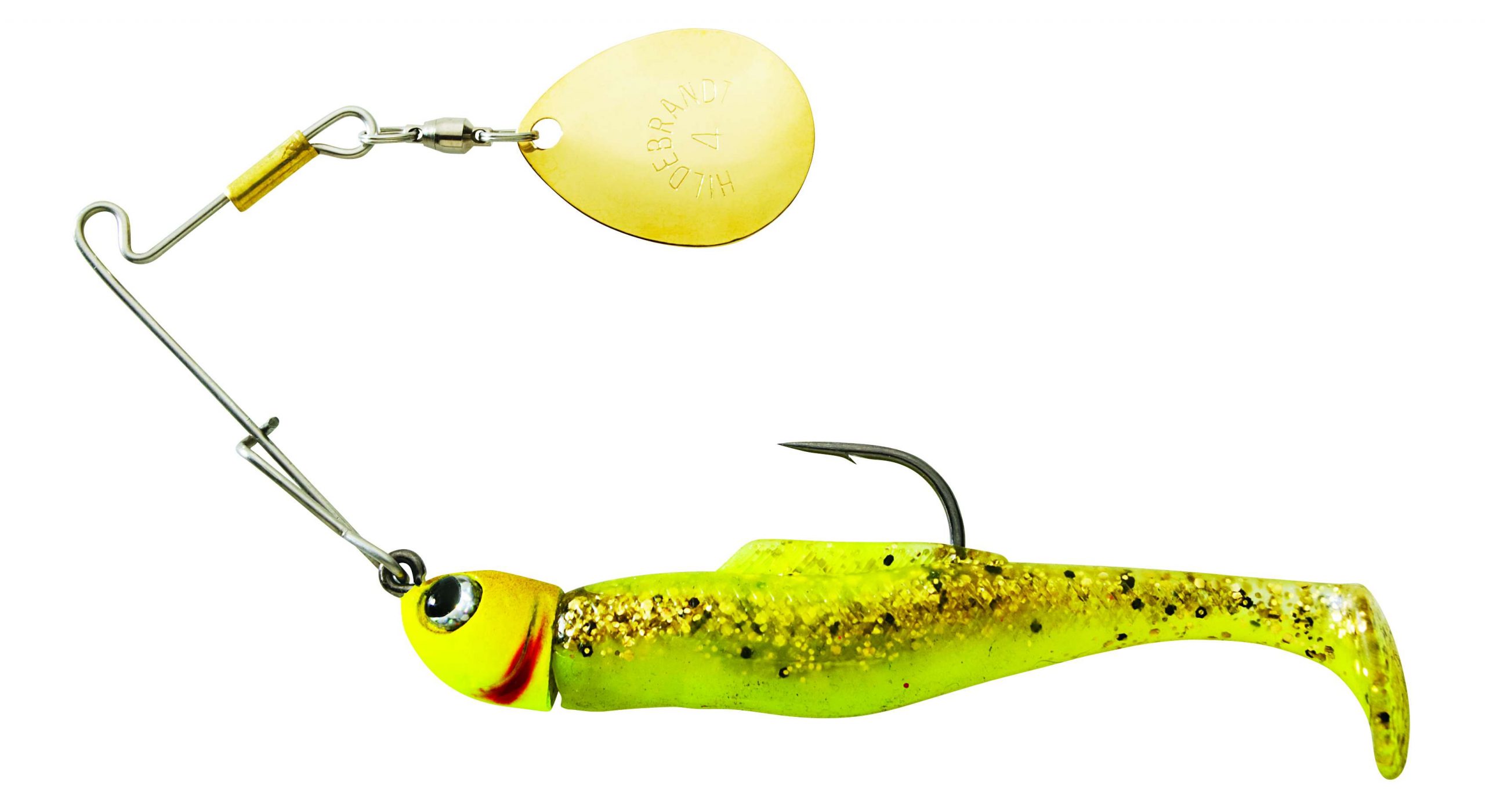
On the menu
Open the tackle compartment of most any bass boat and you’ll find plenty of baits a redfish will eat. Colors may vary somewhat, but since redfish often feed in schools, they’re driven by feeding competition and therefore not terribly picky.
For starters, redfish and bass share a liking for topwaters and don’t think the red’s underslung mouth is a limitation. Slow-mo videos have shown us that redfish have no trouble getting their mouths around a walking or popping bait. It’s more of an up-and-over attack than the the bottom-up attack that bass typically use.
To the list, Schultz adds both respond well to a wide range of lures — topwaters, spinnerbaits, swimbaits, jigs and crankbaits. For the latter, he prefers shallow to medium divers.
“I’ve also caught them in channels on jigging spoons and jerkbaits,” Schultz said.
Given the redfish’s toothless, yet raspy mouth and considerable jaw pressure, saltwater hard baits are typically made sturdier and carry beefy, corrosion-resistant hooks and hardware. Plastics follow the same general shapes, but redfish anglers often favor the durability of Z-Man’s proprietary ElaZtech formula and the scent attraction of Berkley GULP!
Notably, saltwater-specific spinnerbaits are usually single blade designs; either in-line models (common to Louisiana marshes) or the “safety pin” style common to bass tackle. Main difference is the heavier gauge wire needed to endure relentless redfish punishment.
To this point, Schultz designed the Hildebrandt Drum Roller spinnerbait with a sturdy frame, an R-bend attachment point, a single Colorado blade and a tin head. Lighter and stronger than lead, tin allows for a smaller head profile that performs well in shallow scenarios by remaining higher in the water column.
Redfish-specific baits include weedless gold spoons, shad tail jigs and synthetic shrimp, pre-rigged or fished on jig heads. Hanging a faux shrimp or a grub or shad tail jig beneath a popping cork plays upon the red’s feeding instinct. Snapping the rod tip chugs the cork to simulate feeding sounds and when reds come to investigate, the image of a vulnerable bait rising and falling below usually closes the deal.
Schultz said he’s found more vivid colors like chartreuse and red productive for redfish, but natural baitfish colors also produce. Local favorites vary by regions, so check local tackle shops to see what they stock.
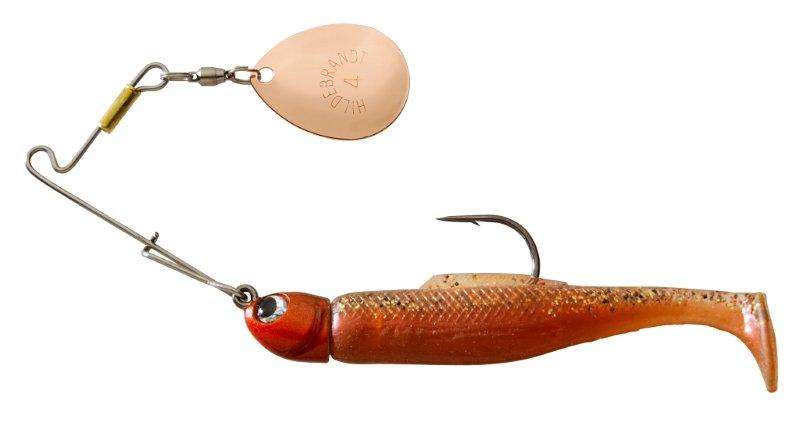
Tackle up
While seasoned redfish pros often use baitcasters for the more rapid-fire casting ability, a medium-heavy spinning outfit in the 7-foot range will handle much of this game. Schultz likes a 7-0 or 7-2 Shimano Expride rod with a Shimano Stradic 3000 carrying 10-pound Power Pro slick.
His largemouth braid-to-fluorocarbon setup goes 10-pound test or lighter, but he won’t go lighter than 15-pound Seaguar Tatsu fluorocarbon for reds. Where bass and reds commingle, Schultz will always lean to the heavier side.
“You run the risk of losing a redfish if you don’t upsize your leader,” Schultz said. “Even though they don’t have any teeth, they have a very abrasive mouth, and they’ll try to grind the lure into the bottom to try and get it out of their mouth.
“A lot of times, the line comes in contact with marl, coral, oysters, seagrass, whatever’s there. That’s how a lot of redfish (free themselves).”
Big largemouth, particularly Florida-strains, can be a handful, but even a big one will usually gas out in a minute or two. Expect a longer and considerably more powerful struggle from a redfish.
How strong? Tie a 6-pound redfish and a 6-pound bass tail-to-tail and the former will drag the latter around the marsh until he gets bored.
“Reds are very strong fish. They’ll do death rolls, they’ll spin your line, they don’t jump but they’ll come to the top and shake their heads,” Schultz said. “My advice is to hold the rod rip up to keep your line away from the bottom where something might break your line.”


